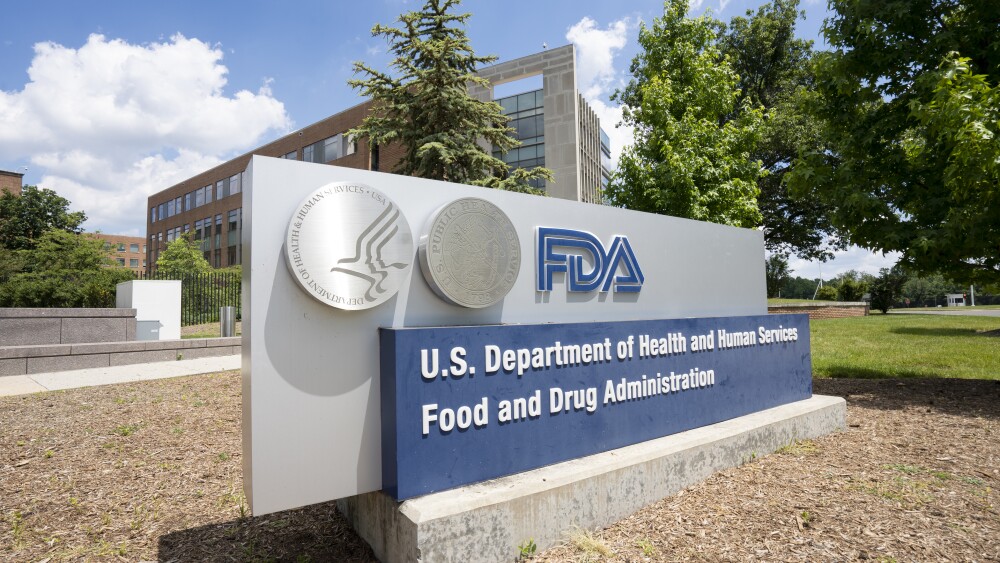Unpredictable communication and a lack of transparency are eroding the industry’s and the public’s trust. The FDA, experts agree, needs to take control of the narrative.
“Chaotic and uncertain.”
That’s how BMO Capital Markets analyst Evan Seigerman described the FDA in 2025 in a BioSpace webinar last week. He is far from alone as the agency continues to face criticism and controversy. At a related October event, former FDA Chief Information Officer Vid Desai said much the same thing.
“There’s a lot of change going on, and I think as I speak to my former colleagues, it just feels very chaotic right now,” recounted Desai, who received a reduction-in-force notice in April and ultimately retired from the agency in August.
Perceptions like these are the culmination of inconsistent messaging, a penchant for unilateral decisionmaking and headline-grabbing leadership decisions, often with “soap opera”–like twists and turns. Just this week, the Center for Drug Evaluation and Research got a new director in FDA stalwart Richard Pazdur after George Tidmarsh resigned amid an investigation into his “personal conduct” in allegedly targeting a former business associate.
Layer onto that the unusual forms of the FDA’s messages—with policies announced via social media, leaks to media running rampant and key leaders coming to well-publicized verbal blows—it’s clear the FDA has an image problem.
“Earlier in the year, I was like, we’re in our podcast era, which is a terrible way to communicate policy, because it’s inconsistent,” Seigerman said. “It’s not in a way that’s formal and understandable. It’s basically hazardously distributed, which is really hard for anyone in the industry.”
For a public health agency looking to regain the public’s trust, such change needs to come with an extra serving of explanation. Kennedy and his team have vowed to practice “radical transparency,” but unclear policies and moving goalposts have industry watchers calling for more insight into the agency’s rationale for its action. This week, Kennedy and other top Trump administration officials reportedly convened with biopharma executives at a Make America Healthy Again summit that was not publicly disclosed nor open to the public or press.
“This notion that they’re being transparent, they have a different definition than you or I, or probably most of the people [who] have ever considered what it means for government to be open,” policy and regulatory consultant Steven Grossman said during the BioSpace webinar.
Political Pressure Cooker
There is little argument that politics in America are extremely divisive right now. That explosive partisanism is undoubtedly spilling over into historically apolitical public health agencies.
Here’s one example from just this week: During a press conference announcing that the FDA would remove the black box warning on hormone-replacement therapies (HRT), HHS displayed a banner at the top of the screen blaming the Democratic party for the government shutdown—then the longest in history.
The risk of politicization is most acute in the vaccine sector. The FDA granted restricted approvals to the latest COVID-19 vaccines in August as the CDC issued new recommendations. In the spring, Kennedy announced via social media a policy change around COVID-19 vaccines for healthy children and pregnant women. Then in the fall, based on votes by an advisory committee entirely revamped by Kennedy himself earlier in the summer, the CDC formalized the new guidance.
The situation reached fever pitch in September when a he-said-she-said soap opera played out in front of Congress. After being fired from the agency, CDC Director Susan Monarez told senators that Kennedy had insisted she pre-approve the new advisors’ recommendations and that she had refused. Kennedy said she was lying. Monarez was backed by CDC Chief Medical Officer Debra Houry, who resigned in protest along with two other senior CDC officials.
Rahul Gupta, president at GATC Health and former White House drug czar, doesn’t think the FDA, at least, is itself “overtly politicized.” Rather, he said during the BioSpace panel, he believes “the perception of politicization is real, and that in itself, is concerning.”
The instability of the FDA’s highest ranks has also drawn criticism. A BioSpace analysis published in April showed that more than half of senior FDA leadership had left the agency in the previous six months. Since then, several other key regulators have exited. Notably, several ousted leaders were experts in cell and gene therapy, a space where the administration says it wants to accelerate drug approvals. Peter Marks’ abrupt resignation in March sent biotech stocks tumbling, while the ousting of well-respected Office of Therapeutic Products Director Nicole Verdun and her deputy Rachael Anatol in June further dismayed the industry.
Some who left the agency ultimately came back. Shortly after Tidmarsh stepped up as head of CDER in July, new Center for Biologics Evaluation and Research Director Vinay Prasad left his position, and Tidmarsh was suddenly acting director of that division as well. His departure followed the FDA’s controversial action to halt all shipments of approved Duchenne muscular dystrophy (DMD) gene therapy Elevidys after the media broke the news of a third patient death tied to the viral vector used in the treatment. Just 10 days later, however, Prasad was back.
“Hopefully FDA understands what a bad job they did over that two weeks, three weeks when there was a safety issue,” Grossman said. Once they were both back on top of their respective FDA divisions, Prasad and Tidmarsh apparently butted heads. Tidmarsh initially agreed to resign following allegations that his comments on social media had intentionally harmed Aurinia Pharmaceuticals. But he ultimately spoke out, fighting for his job and his name. He shared with STAT News an email from Prasad threatening his job should he not comply with his commands.
“It’s certainly unprecedented stuff like this has been in the news,” former FDA Commissioner Robert Califf told the publication. “I can’t say there haven’t been complex squabbles at FDA. But certainly, during my lifetime, there has been a view of the responsibility of the FDA to the public that it practices highly principled corporate management. And this seems to be lacking.”
Of Prasad’s aggressive email, Califf said: “I can’t imagine that being written by any modern leader. You just wouldn’t do that.”
Grossman pointed to Prasad’s and others’ lack of experience. “I think it’s worse, because we’ve got new people who have never run a large organization,” he said at BioSpace’s event last week. “[There’s a] lack of experience in the people who are making the decisions right now, running a large organization, being put in the moment where they’re publicly accountable and they have less than perfect information.”
Calls to address this experience gap could well be answered in the form of Pazdur, a 26-year veteran of the agency. By all popular accounts, the current Oncology Center of Excellence director is, and will continue to be, a stabilizing force within the FDA.
“Rick is a seasoned regulator, expert trialist and an innovative thinker, and this news will reassure many people inside and outside of FDA,” Ned Sharpless, managing director at Jupiter BioVentures, wrote on LinkedIn.
The promotion isn’t free from drama, however. In a December 2022 blog post about the state of oncology, Prasad wrote that Pazdur “has done a catastrophically bad job.” And Pazdur reportedly turned down the position before ultimately accepting. One has to wonder how much his initial decision was influenced by the spectacle that has become FDA leadership.
Failure To Craft a Good Story
Looking at the agency’s policies themselves does little to buoy the FDA’s persona. Many new initiatives raise more questions than answers, and the FDA has since reversed course on several rare disease therapies that appeared to be headed toward the market. Meanwhile, patients with Huntington’s disease, spinocerebellar ataxia and Duchenne muscular dystrophy don’t have more time to wait.
Equally as important as the message is the tone in which it is delivered. And if there is one overarching theme in HHS communications, it is that Trump’s healthcare leaders are on a mission to undo the perceived wrongs of past administrations.
“For more than two decades, the American medical establishment turned its back on women,” Kennedy said during the HRT press conference. “We’re challenging outdated thinking and recommitting to evidence-based medicine that empowers rather than restricts.”
This accusatory tone has been consistent throughout Kennedy’s 10 months in office. In a May 27 video posted to X announcing the policy change around COVID-19 vaccines, the health secretary took a swipe at former President Joe Biden. “Last year, the Biden administration urged healthy children to get yet another COVID shot, despite the lack of any clinical data to support the repeat booster strategy in children,” Kennedy said in the 58-second clip.
In pointing the finger at others for regulatory oversight of medicine’s current state of affairs, Kennedy and his team paint themselves as saviors. In some cases, this showboating can overshadow what some would see as the more relatable message of improving the health of Americans. Speaking about the new priority voucher program, for example, Grossman said the FDA did not, in fact, provide the explanation that they were addressing unmet medical need.
“The narrative they offered was that they were doing something extraordinarily different, extraordinarily special, and the implication was that they leaned on people to get concessions,” he said. “And that’s not narrative, that’s not useful if you’re trying to build trust, if you’re trying to have a narrative that people identify with.”
Perhaps Kennedy, Makary and the rest intended one of their narratives for all the sweeping changes to be “gold-standard science.” But for Grossman, the oft-mentioned catchphrase “completely misses the fact that science is only so advanced in any given moment, you have to make decisions.”
Seigerman agreed that “gold-standard science” doesn’t do much to engender the industry’s trust. “I think gold standard is kind of just a talking point that resonates with the broader populace that doesn’t actually mean anything.”
The totality of the situation—with the limited view we have from the outside—makes it hard to know where the FDA’s motivations lie and what to expect in the future. And it certainly doesn’t engender confidence that the agency is in the best position to serve U.S. patients.
“What worries me more than overt politics is the erosion of trust through these mixed communications,” Gupta said. “When I was in the White House we made a lot of decisions, but it was always to make sure that we maintained the trust of the public we serve.”











